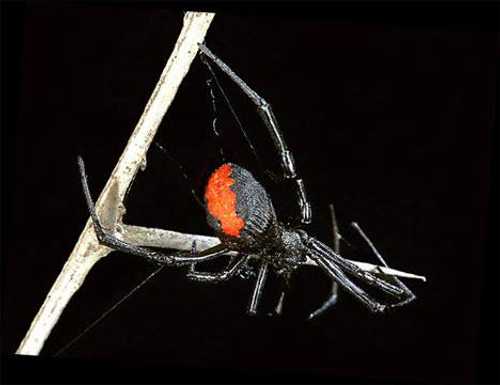
Homefront
Spider silk
FBbrummbar
Black Widow Spiders and the Manufacturer of Cross Hairs ============================================== A LIFE magazine article published on August 30th 943 credited each of several government employed arachnids with spinning between 100 and 180 feet of black widow spider thread a week. This thread was then used to make cross hairs in the gunsights of U.S. Army instruments of war. This is not the first time spider thread was employed for this purpose. Before World War II began, different species of garden spiders had threaded various precision optical devices throughout the United States However, with the arrival of war, the black widow was used out of necessity to supplement a dwindling supply of material. Ironically, workers at the U.S Army Quartermaster Corps spider web production shop, where thread was collected, found black widows much easier to use than the other less poisonous but faster moving garden varieties. Thread Collection ============== The Quartermaster Corps was in charge of all aspects of thread collection, including spider gathering. They did this on base at Fort Knox, Kentucky, where soldiers famously encountered high populations of black widows during outdoor training . After on-base collection, the specimens were sent to Columbus, Ohio, where they were housed in glass jars, fed two flies each week, and began systematically producing thread. Thread production was a hands-on and time consuming process. It was done every two days, after the careful removal of a black widow from its glass jar. The spider was then gently placed upon a wire coat hanger that was bent to form a spindle-type structure. Process ======= As the spider dangled from the hanger, continually spinning its thread, the hanger was rotated to steadily collect the growing strands. Following collection, the web material was unwound. The free floating end was covered with a piece of plasticine to assist with the unwinding process. Then, pieces of the thread were cleaned of dust and debris with a brush coated in acetone. Finally, the web segments were strung upon a diaphram and fitted to a surveyor’s transit. Unbreakable ========== The army went to such efforts because of the unique qualities of spider silk that made it superior to other more easily supplied substances. A spider’s spinnerets produce thread as thin as one fifth the diameter of human hair, yet it is almost unbreakable. In fact, platinum or steel wire made of a similar thickness is much less durable. Spider thread is not only strong, but also elastic, and stretches tightly in the strong, straight line necessary for cross hairs. In addition to this, it is uniform in diameter and can withstand extreme temperatures better than other known materials. Unfortunately, in addition to being a painstaking process for human workers, thread production of this magnitude had an even greater toll upon the spiders themselves. In a few months they each produced more thread through this collection method than they would normally produce throughout their lives. Because of this, their usual year long lifespan was reduced to a mere four months. Nan Songer ========== In 1939 Nan Songer was informed of a great U.S. government need for spider silk. Hearing this, she went out and collected spiders and their egg sacs from plants and trees, placing them in glass jars and housing them in the front of her farmhouse. Well into her operation, a San Bernardino newspaper wrote a story on Songer’s efforts and informed the public of her need for black widow spiders. Unexpectedly, her supply greatly increased when readers began sending her shipments of arachnids from across the country. This was done in spite of the federal law prohibiting shipments of poisonous insects. However, instead of contacting her to condemn this event, the government merely requested silk. The U.S. Bureau of Standards asked Songer for thread with a one ten thousandth inch diameter. This was no easy feat, and it took about two years to separate each thread into smaller two or three pieces. She used banded, golden, black widow, and lynx spiders throughout this process, which she considered the top producers. Her amassed silk was used for bombsights and instruments in high altitude bombers and was sold at a price of twenty dollars for every hundred feet. Sources ======= http://hubpages.com/…/The-patriotic-black-widow-spiders-of-… http://www.amerisurv.com/…/TheAmericanSurveyor_BediniAlongC…
2480 Views
12/15/2015
